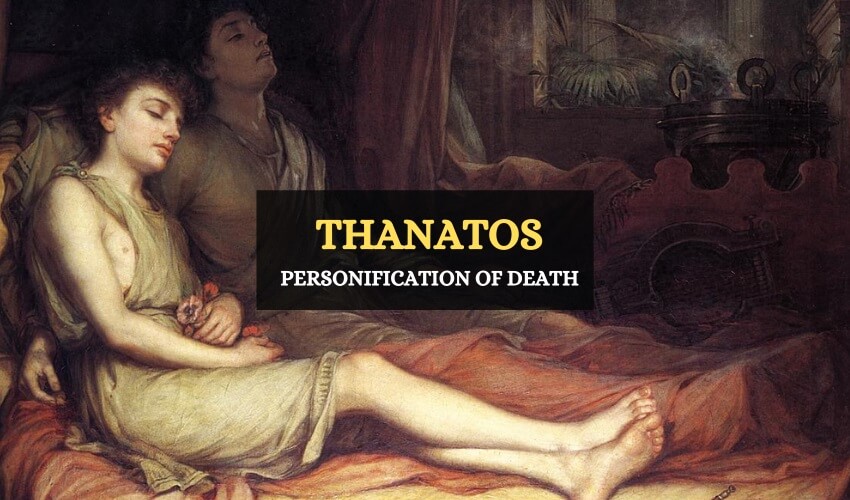
Table of Contents
Thanatos, the Greek personification of Death, is an embodiment of non-violent and peaceful passing. When translated to Greek, his name literally means death.
Thanatos was not a god, but rather a daimon or death’s personified spirit whose gentle touch would make a soul pass away in peace.
The Role of Thanatos in Greek Mythology
Quite often, in Greek mythology, Hades is mistaken to be the god of death. Being the ruler of the Underworld, Hades normally deals with death but is the god of the dead. However, it’s the primordial deity known as Thanatos who is death personified.
Thanatos doesn’t play a huge part in Greek mythology. He was amongst the first generation of gods. Like many of the primordial beings, his mother Nyx, the goddess of Night, and his father, Erebus, the god of Darkness, are often thought to represent concepts rather than physical figures.
However, Thanatos is somewhat of an exception. He can be seen making a few rare appearances in early Greek artwork. He often appears as a man with wings wearing a dark cloak. Sometimes, he’s portrayed holding a scythe – a figure resembling what we consider today to be the Grim Reaper.
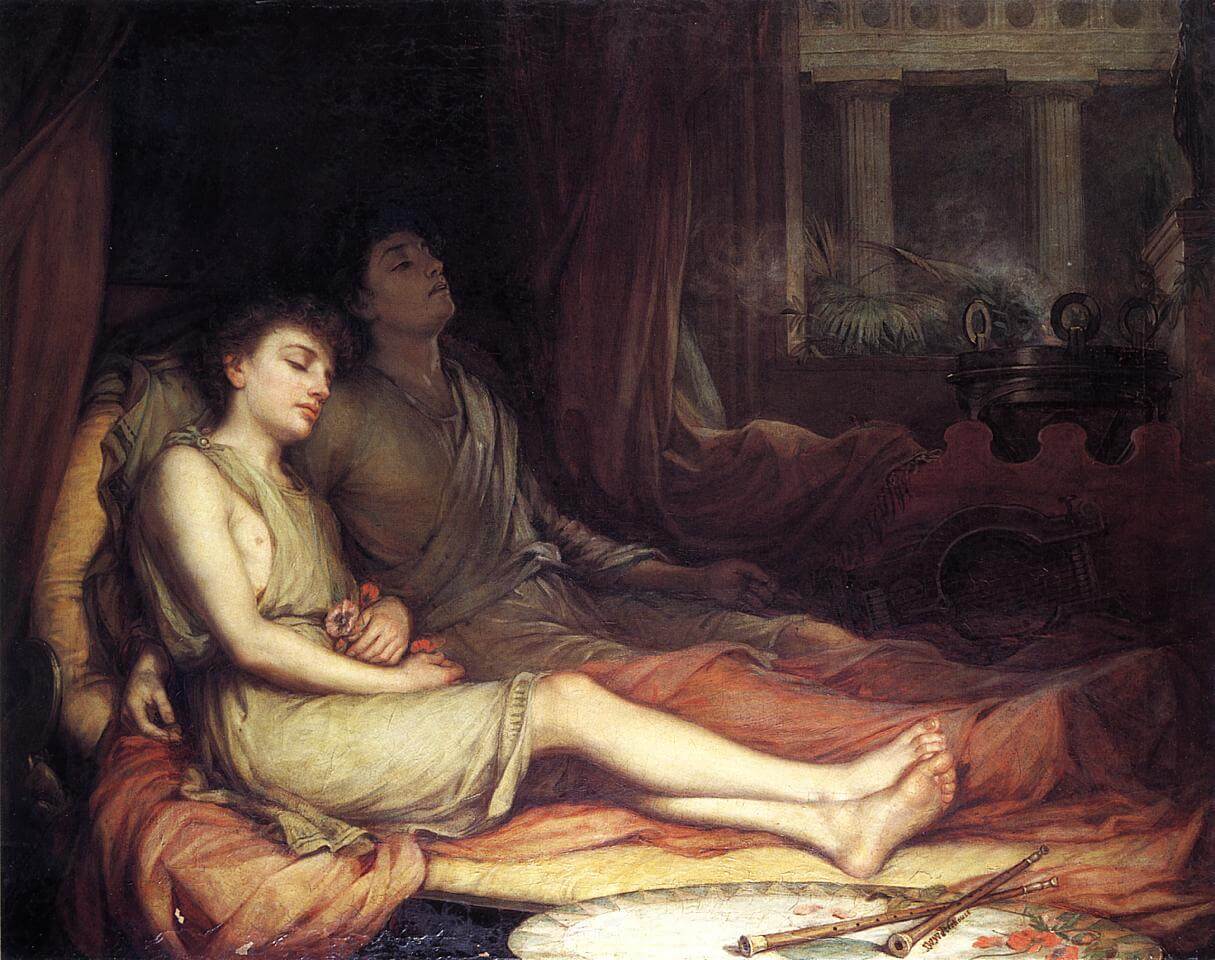
When deities are associated with death, they are often assumed to be evil. The fear of death and the inevitable is why these figures are demonized. But the majority of these deities, Thanatos included, are far from evil. Thanatos was thought to be the spirit of non-violent death known for his gentle touch, similar to that of his brother Hypnos, the primordial deity of Sleep.
It was Thanatos’ sister, Keres, the primordial spirit of slaughter and disease, who’s often seen as a blood-thirsty and haunting figure. Thanatos’ other siblings are just as powerful: Eris, the goddess of Strife; Nemesis, the goddess of Retribution; Apate, the goddess of Deception; and Charon, the boatmen of the Underworld.
When performing his duties, much like Hades, Thanatos is unbiased and indiscriminate, which is why he was hated by both men and gods. In his eyes, death couldn’t be bargained with, and he was merciless with those whose time had come to an end. However, his touch of death was quick and painless.
Death may have been considered unavoidable, but there are some occasions where individuals managed to outsmart Thanatos and cheat death for a brief period of time.
Popular Myths of Thanatos
In Greek mythology, Thanatos plays an important role in three essential stories:
Thanatos and Sarpedon
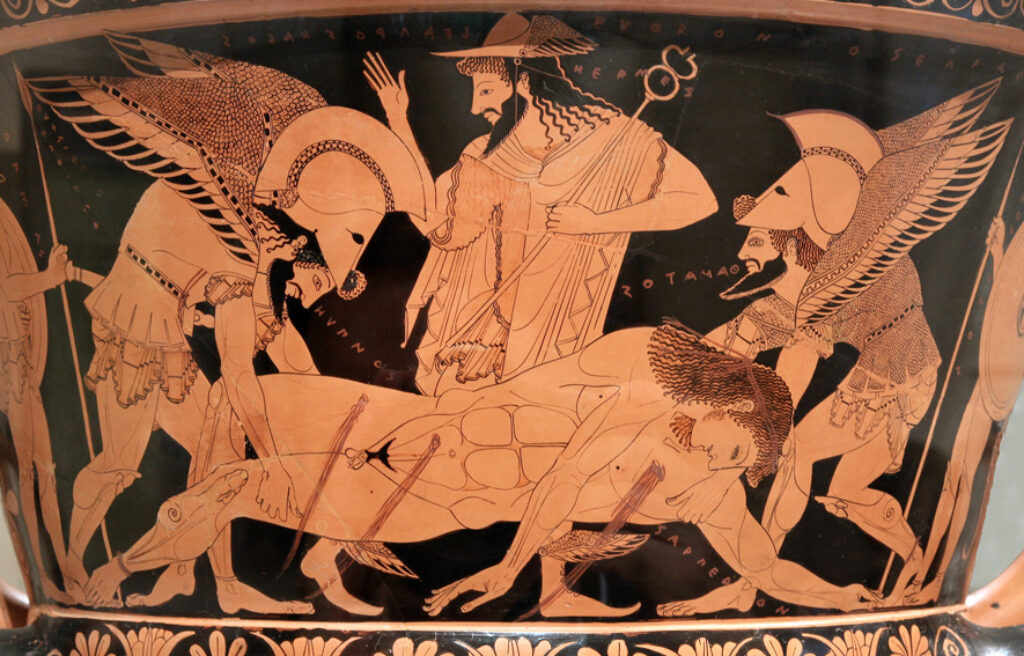
Thanatos is most commonly associated with one event that took place in the Trojan war. During one of the battles, Zeus‘s son, the demigod Sarpedon, was killed while fighting for Troy. Sarpedon was an ally to the Trojans and fought fiercely to the last year of the war when Patroclus killed him.
Despite being responsible for engineering the war, Zeus lamented his son’s death. He refused to let his body being disgraced on the battlefield.
Zeus ordered Apollo to go to the battlefield and retrieve Sarpedon’s dead body. Apollo then gave the body to Thanatos and his brother, Hypnos. Together they carried the body from the battlefront to Lycia, Sarpedon’s homeland, for a proper hero’s burial.
Thanatos accepted this task, not because it was an order from Zeus, but because honoring death was his solemn duty.
Thanatos and Sisyphus
The king of Corinth, Sisyphus, was known for his guile and trickery. His revealing of the gods’ secrets angered Zeus, and he was punished.
Thanatos was ordered to take the king to the Underworld and chain him there as his time among the living has come to an end. When the two reached the Underworld, the king asked Thanatos to demonstrate how the chains work.
Thanatos was merciful enough to grant the king his last request, but Sisyphus seized the opportunity, trapping Thanatos in his own chains and escaping death. With Thanatos bound in the Underworld, no one on Earth could die. This angered the god Ares, the god of war, who wondered what good was war if his opponents couldn’t be killed.
Therefore, Ares intervened, traveling to the Underworld to free Thanatos and handing over king Sisyphus.
This story shows that Thanatos isn’t evil; he displayed compassion toward the king. But in return, he was tricked. Therefore, we can potentially view this compassion as either his strength or weakness.
Thanatos and Heracles
Thanatos also had a brief confrontation with the hero Heracles. After Sisyphus showed that the god of death could be outwitted, Heracles proved that he could also be outmuscled.
When Alcestis and Admetus got married, drunk Admetus failed to give sacrifice to the goddess of wild animals, Artemis. The angry goddess put snakes in his bed and killed him. Apollo, who served Admetus at that time, saw it happen, and with the help of the Fates, he managed to save him.
However, now, there was an empty spot in the Underworld that needed to be filled. Being the loving and loyal wife, Alcestis stepped forward and volunteered to take his place and die. At her funeral, Heracles became angered and decided to venture to the Underworld and try to save her.
Heracles fought Thanatos and eventually managed to outwrestle him. The god of Death was then forced to release Alcestis. Even though the turn of events angered him, Thanatos considered that Heracles fought and won justly, and he let them go.
The Depiction and Symbolism of Thanatos
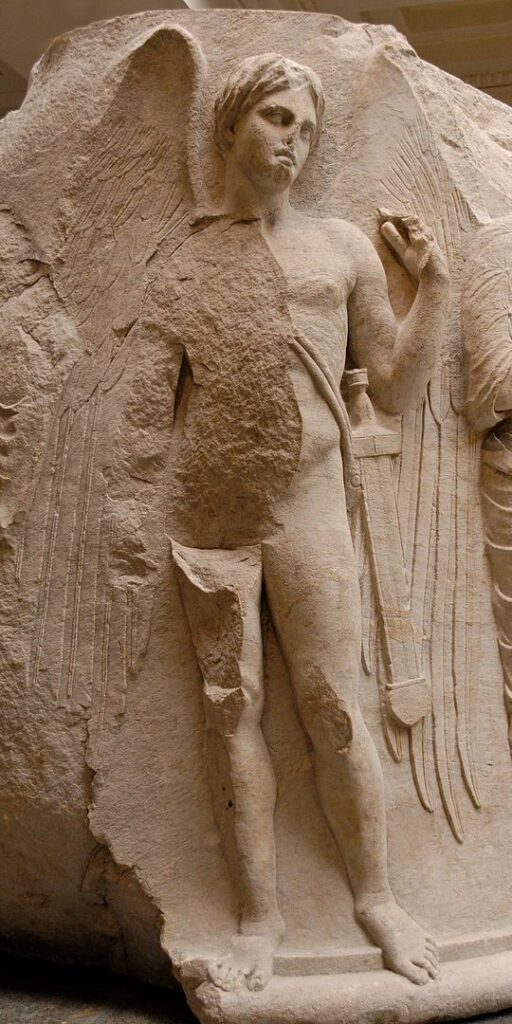
In the later eras, the crossing from life into death was seen as a more appealing option than before. With this came the change in Thanatos’ appearance as well. More often than not, he was depicted as an extremely beautiful god, similar to Eros and the other winged deities of the Greek mythology.
There are several different depictions of Thanatos. In some, he is shown as an infant in his mother’s arms. In others, he is depicted as a winged god holding an inverted torch in one hand and a butterfly or a wreath of poppies in the other.
- The torch – Sometimes the torch would be lit, and other times, there would be no flame. The flaming upside-down torch would represent resurrection and eternal life. If the torch is extinguished, it would symbolize the ending of a life and mourning.
- The wings – Thanatos’ wings also had an important symbolic meaning. They were a representation of the role of Death. He had the ability to fly and travel between the mortals and the Underworld’s realms, bringing the souls of the deceased to their resting place. Similarly, the butterfly’s wings symbolized the spirit’s journey from death to the afterlife.
- The wreath – The circular shape of the wreath suggests eternity and life after death. For some, it could be seen as a symbol of victory over death.
Thanatos in Modern Day Medicine and Psychology
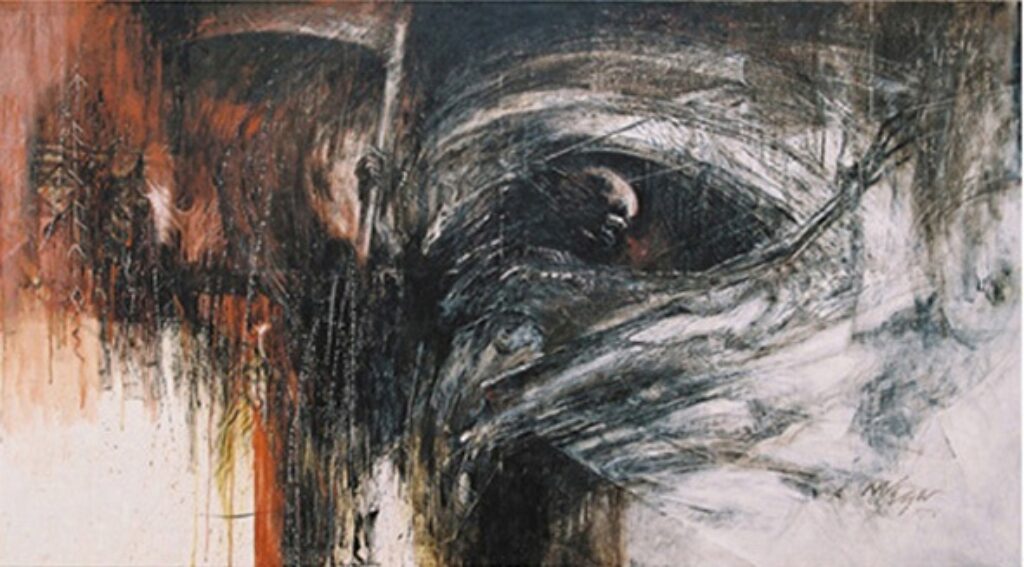
According to Freud, there are two basic drives or instincts in all human beings. One is related to the life instinct, known as Eros, and the other refers to the death drive, called Thanatos.
From the concept that people possess a drive for self-destruction, a number of modern medicine and psychology terms emerged:
- Thanatophobia – the fear of the concept of mortality and death, including graveyards and corpses.
- Thanatology – the scientific study of the circumstances associated with a person’s death, including grief, different death rituals accepted by different cultures and societies, various commemoration methods, and biological changes of the body in the after-death period.
- Euthanasia – comes from the Greek words eu (good or well) and thanatos (death). and can be translated as good death. It refers to the practice of ending the life of a person suffering from a painful and incurable disease.
- Thanatosis – also known as apparent death or tonic immobility. In animal behavior, it refers to the process of feigning death to ward off unwanted and potentially detrimental attention. When it comes to humans, it can occur if a person is experiencing intense trauma, such as sexual abuse.
Thanatos Facts
His mother was Nyx and his father was Erebus.
Thanatos is best known as the personification of death. He’s not so much the god of death as Death himself.
Thanatos is often depicted with poppy, butterfly, sword, inverted torch and wings.
Thanatos’ siblings include Hypnos, Nemesis, Eris, Keres, Oneiroi and others.
Thanatos isn’t depicted as an evil being but one who has to perform an important and necessary role in order to maintain the balance of life and death.
Thanatos Roman equivalent is Mors.
From his origins in Greek myth, Thanatos is a popular figure today in video games, comic books and other pop cultural phenomena. In these, he’s often depicted as evil.
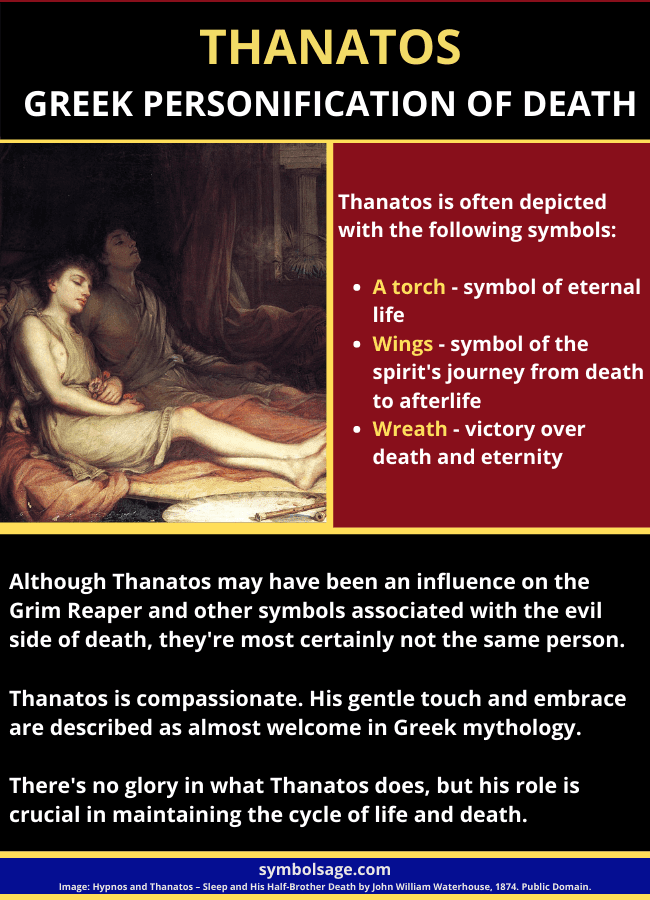
To Wrap It Up
Although Thanatos may have been an influence on the Grim Reaper and other symbols associated with the evil side of death, they’re most certainly not the same person. His gentle touch and embrace are described as almost welcome in Greek mythology. There’s no glory in what Thanatos does, but the role he performs is crucial in maintaining the cycle of life and death.








